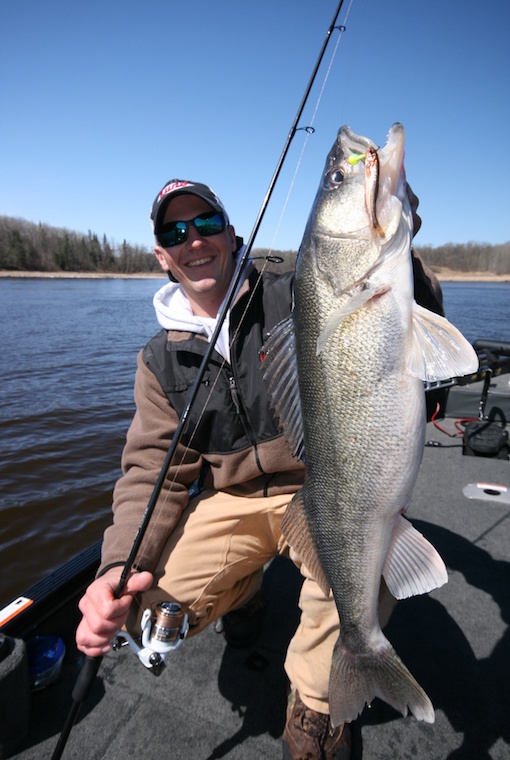
Working as a fishing guide in northwestern Ontario through my high school and university years, I did plenty of walleye fishing. They’re the species most people visit the region’s resorts to catch, so I learned a lot about walleye working a variety of waters.
I used to float from camp to camp; I’d be on Lake of the Woods for a couple of weeks, then at a fly-in resort for a week or so, then at Wabigoon Lake. This worked well for me because I could set my own schedule and I got to fish different types of lakes and rivers with varying water clarity, depth, and forage. It definitely made me a better angler.
Walleye fishing is so good across the Sunset Country Region we can often catch fish with artificial lures and soft plastics, but day in and day out, in any weather, live bait will put walleye in the boat.
The big three
The big three — minnows, leeches, and nightcrawlers — each have their own time and place. Here’s what you need to know about using them.
Early in the spring, through the first few weeks of the season, minnows will outfish everything else, small minnows in particular. This is because walleye are focused on eating smaller, young-of the-year bait, and they are usually lethargic following their rigorous spawning cycle.
In the summer and into fall, large minnows, particularly sucker minnows fished on a Lindy rig, are a good bet for catching a trophy walleye on deep, main-lake structure.
In the fall, shiners are tough to beat because in many rivers or lake areas with current, shiners will make a migration or “run” and walleye always follow. It’s unknown why shiners make these fall runs because they spawn in the spring, but it happens on many waters year after year.
How to rig them
As a fishing guide who has taken lots of inexperienced anglers fishing for walleye, I’ve found a simple jig and minnow is tough to beat.
Traditional jigs are fine, but I’ve become a big fan of the shorter-shank Northland Fire-Ball jigs for live bait. They are designed for hooking leeches and minnows only once so the bait stays lively, and they don’t twist line the way a regular-style double-hooked jig does.
Minnows
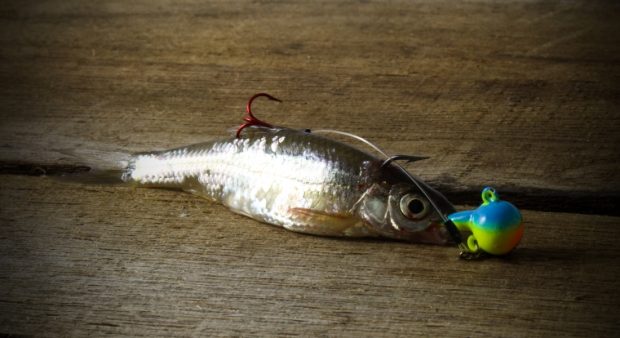
Because they are so readily available, minnows are the most common type of live bait used across Ontario. Throughout the open-water season, they can be found at most bait or tackle shops. Though a variety of minnow species are permitted as bait in Ontario, most of the time when we buy a dozen minnows at a bait shop we’re getting some type of chub or dace.
Shiners are also available in some areas, and while they work well for walleye fishing, they’re fragile and tougher to keep alive. Sucker minnows are common in most areas and are often a little bit on the large side, so they’re a good choice when targeting trophy walleye.
Where they shine
I believe I could catch a walleye on a minnow every single day of the open water season. They’re the universal, do-everything bait in my opinion. They shine over leeches and crawlers in cold-water periods, particularly when baitfish are walleyes’ primary forage option.
Jig sizes to use
Shallow water: 1⁄8 ounce
20 to 30 feet of water: 1⁄4 ounce
Deeper water or currents: 3⁄8 ounce
Lindy Rig
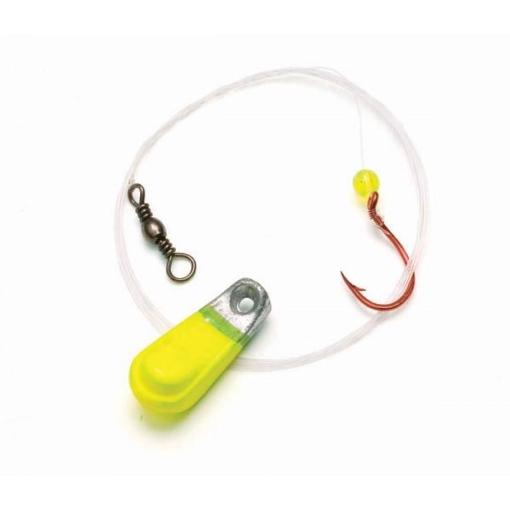
The rig consists of a snag-resistant walking sinker, a swivel, and a #2 octopus hook tied onto a 3- to 8-foot leader. Hook a minnow through the lips and slowly troll or hang this rig near high-percentage drop-offs or high spots on main-lake structure. It’s a killer technique for summer.
Leeches
Leeches are often sold by the dozen or the pound (about 12 dozen). Though many people are frightened to pick up leeches and put them on hooks, I can assure you they are harmless. Leeches can typically be trapped in small ponds, though some years they’re tougher to capture due to low-water conditions on prime waters. That was the case last year across northwestern Ontario.
Where they shine
During summer, leeches are probably the best bait for catching both numbers and large walleye consistently. There is something about the natural undulating action of a leech that walleye can’t resist.
During summer walleye tournaments on Lake of the Woods, the Winnipeg River, or Wabigoon Lake, I always get calls from friends wondering where to find jumbo leeches, as they’re definitely the most popular live bait amongst hard-core anglers.
Leeches are easy to store and take out on the water; all you have to do is keep them cool. This makes them a good choice where live baitfish are not permitted or on remote trips where carrying minnows isn’t possible.
How to rig them
When I’m guiding people who don’t get to fish a lot, I like to use a leech on a ¼ ounce Fire-Ball jig. I have my guests drop it to the bottom then lift the jig about one to two feet and simply hold their rod as still as possible, checking for bottom contact every so often to make sure they stay close to the bottom. The natural action of the leech entices more bites than moving a rod and jig around.
Jay Samsal and Scott Dingwall of Kenora are two of my best fishing buddies and they’ve been cleaning up at local walleye tournaments over the past few years by trolling slowly with leeches. When most anglers think of trolling with live bait, they think of crawlers on a harness rig, but as Samsal told me, trolling with a leech on a single-hook spinner rig is a deadly tactic.
“We use a one-ounce bottom bouncer with a spinner rig and a single #2 hook. Hook the leech once through the sucker end and troll at one to two kph (.5-1.25 mph),” Samsal said. “I like to use a Colorado blade that has a good cup on the end of it so it will still spin, even at low speeds.”
Keep your bait happy
Live bait works best when it’s fresh. Often the best approach is picking up bait on your way to the lake, but if you have to travel any distance or store bait for a time, follow these guidelines.
Whether you’re using minnows, leeches, or crawlers, keeping bait cool is key. This could mean using a quality cooler to transport and store it. Change the water for minnows and leeches if holding them for multiple days. Avoid tap water, which can contain substances that can kill your bait. If natural water isn’t available, natural spring water from a grocery store is the next best option.
Crawlers
Nightcrawlers are easy to catch from early summer through to fall so they’re usually available at bait shops. Like minnows and leeches, crawlers will catch fish all season long, but there are a few situations where they work really well.
Often sold by the dozen, they’re great for jigging and trolling.
The downside to crawlers is that they can be messy to use when stored in a container of dirt. I keep mine in a small cooler filled with moss so my boat is relatively clean at the end of the day.
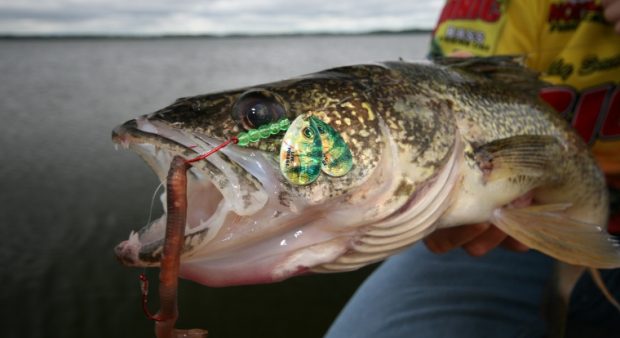
Where they shine
Across Ontario, most waters experience an intense mayfly hatch between mid-June and mid-July. As these invertebrates emerge from the bottom of our lakes, walleye feed extensively on them. This can make fishing tough, because these bugs are all walleye are focused on eating.
Many years ago, successful tournament angler and guide Alex Keszler told me something I’ve never forgotten. He said when the mayfly hatch is happening, half a nightcrawler rigged on an orange jig will outfish everything else. I’ve followed his advice since then, and have had some great catches.
On waters where you must search for fish and trolling is the best method to cover water, using a spinner rig with a crawler harness is a proven tactic, from the Great Lakes to northern fly-in lakes.
How to rig them
When using crawlers on a jig, a regular shank jig is better for double-hooking the bait. A 1⁄8 -ounce jig is the best size for most situations, but larger jigs can be used for deeper water. During the mayfly hatch orange is a proven colour, though experimenting with different colours is never a bad idea.
When using a crawler harness to troll, a bottom bouncer is the best way to deliver the bait and avoid snagging. For water under 20 feet, a one-ounce bouncer is best. After that, I like to go up a half ounce for each five-foot increase in depth.
Most crawler harnesses have two hooks, one that can be hooked through the head of the worm and the other into the body of the worm.
Trolling from 2.5 – 3.5 kph (1.5-2 mph) is the best speed for covering water. When you get a bite, give the fish some line for a second and then set the hook. It’s about as easy as it gets.
Artificial bait will put walleye in the boat in certain situations, but if you don’t want to mess around or you’re short on time, live bait will always get the job done.
Can I use it?
Provincial live bait regulations have changed in recent years because of the increasing threat caused by invasive species and the spread of disease.
For complete details about fishing with, transporting or trapping live bait, consult your 2020 recreational fishing regulations summary, and check your specific Fisheries Management Zone page.
Catching your own
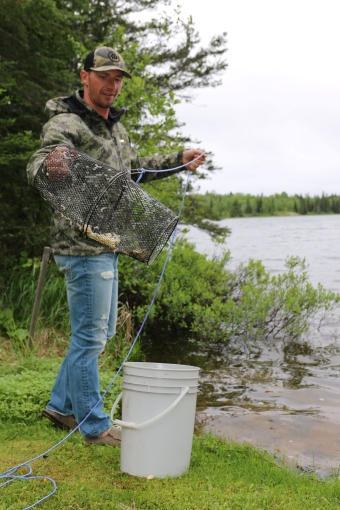
Buying bait on your way to the lake is usually the easiest option, but in some cases you must catch your own leeches, crawlers, or minnows to make sure you get what you want.
LEECHES: Catch them in small ponds with a trap made from an aluminum sheet folded together or a coffee can with holes drilled in it. Chicken breast, liver or even fish parts from previously cleaned fish work for bait.
MINNOWS: these can be caught from small ponds and lakes with minnow traps. Bread torn into small chunks works great for bait.
NIGHTCRAWLERS: worms emerge from the ground during the summer just after dark, especially after a rain. Run a sprinkler for an hour or two before dark and they’ll be laying around all over the place. Use a low-power headlamp or flashlight and grab crawlers as close to their holes as possible to avoid ripping them. You’ll be surprised at how quickly they can crawl back in the ground!
Originally published in the June 2019 edition of Ontario OUT of DOORS magazine


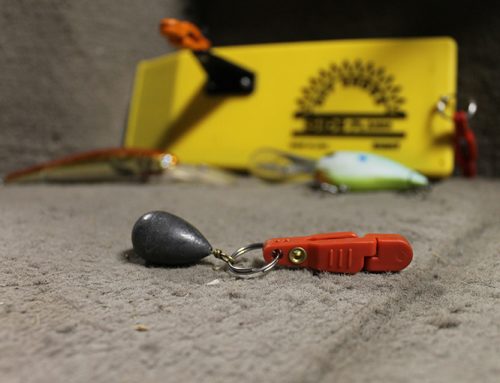
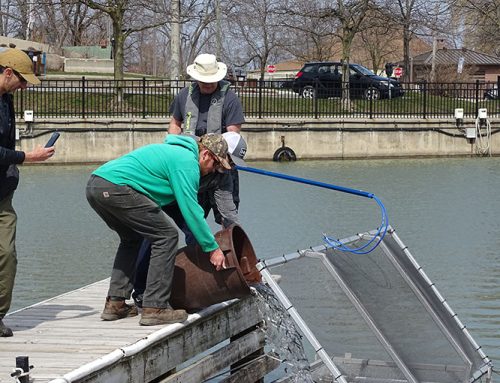
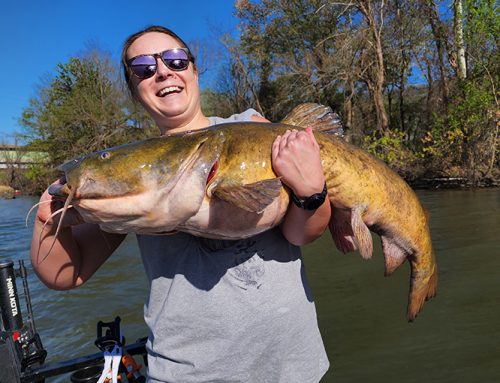
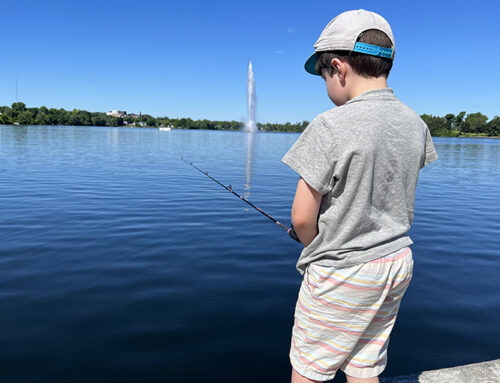
Leave A Comment